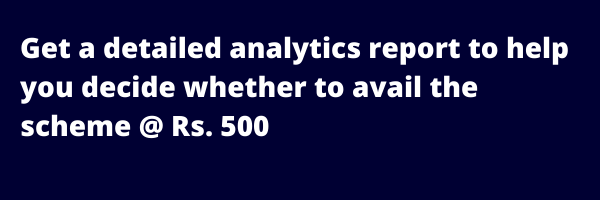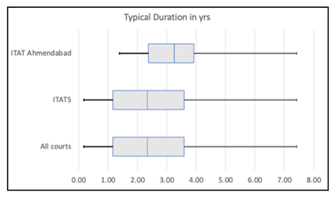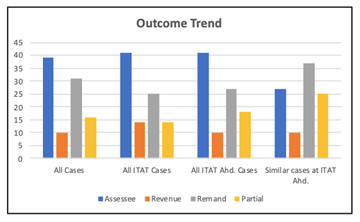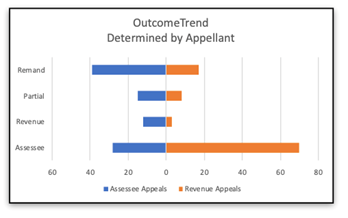A few days ago, the US announced that it no longer considers India a "developing" country but a "developed" country. While that sounds like a good thing from a status perspective, being classified as a "developing" country, it had some trade subsidy benefits attached to it, which we no longer can avail. That aside, you may ask what does it mean to be a "developed" country?As per Wikipedia, it is a sovereign state that has a developed economy and advanced technological infrastructure relative to other less industrialized nations.
Legal and tax technology has considerably evolved in developed countries, and lawyers and tax practitioners often rely on analytics to make strategic decisions. Analysing India with this lens, a question comes naturally to mind – are legal professionals in India using analytics to take similar strategic choices or do they still purely rely on gut, intuition, wisdom,or experience(forgive the tautology).
What is interesting to note is that an advanced technological infrastructure exists. The question is, is it being used?
The Case Study
Vivaad se Vishwas (VsV) direct tax settlement scheme allows taxpayers against whom litigation is pending to settle all matters by paying 100% of the tax demand in case of assessee appeals and 50% of the tax demand in case of revenue appeals. Assessees can also settle only penalty proceedings against them by paying 25% of the penalty or interest amount in question. Once the case is settled, the assessee gets full immunity, and no further proceedings can be initiated against them in the matter.
So, let's see if analytics can be used here to determine whether you should or shouldn't take advantage of this scheme.
The Issue Under Examination
The Riverus Income Tax product was used to get analytics for a case filed in December 2017 in ITAT Ahmedabad for an issue related to unexplained cash credits. Our analysis follows.
The Factors
While every case involves a lot of variables, we evaluated the following factors:
I. Expected duration of the case: There is a direct correlation between the length of the case and the cost of litigation associated with it. Over and above the mounting legal fees, the assessee faces the loss of income and potential cash flow problems from any deposit made by them to the court.
II. Possible outcome of case: One would be less inclined to settle a case where the probability of the outcome being in your favour is greater. Outcome trends can be beneficial for analysing specific jurisdictions as courts tend to follow jurisdictional precedents while deciding cases.
III. The appellant in the case: The Vivaad se Vishwas scheme is implemented differently for appeals filed by revenue and those filed by assessees. Moreover, outcome trends vary significantly between assessee and revenue appeals. Courts usually tend to uphold assessee favouring decisions by the lower forum, making the appellant a key marker in more accurately projecting outcome trends.
Duration Analytics
Knowing the average duration of a case can help a person put an estimate on the cost of litigation that could be involved with the case. However, the average duration paints an incomplete picture of the life cycle of a case. A more accurate representation comes forth when duration data is plotted on a timeline.
The graph provides a breakdown of duration for disposed cases similar to our issue un question in terms of frequency. The box represents the duration span of 50% of all cases. This would indicate the most likely period in which a person's case gets decided.
The black lines extending outward from the boxes signify standard deviation, representing the remaining 25% each of the cases. These effectively show the known minimum and maximum duration of any case.
Having a breakdown of duration in the manner mentioned above can be of immense utility while deciding ongoing litigation. If a person's case has gone past the average duration mark, the timeline will help them get a sense of the range to which it can further extend while at the time allowing them to compare the jurisdictional trend with the nationwide average.
Outcome Analytics
Since jurisdictional precedents hold the most weight in front of the court, an outcome trend can give taxpayers a prima facie idea about the likelihood of success in their case. Besides, outcome trends can also flag any peculiar pattern that a taxpayer may need to watch out for a while strategizing about their case.
For instance, in the above graph, while ITAT Ahmedabad seems to be as assessee friendly as the rest of the country in general, for this issue, the assessee win percentage is noticeably lower. Also, the rate of remand for the same issue is higher than average at the forum. In the context of the VsV scheme, this would tell the assessee that their chances of a positive outcome are slightly below average and there is a high possibility of extended litigation as the matter could be remanded.
Appellant Analytics
The next question that we analyse in more detail is, does it matter who files the appeal? While most courts show a noticeable trend for reaffirming lower court decisions,this is truer when the lower court decision is in favour of the assessee. When the revenue wins at the CIT level, ITATs are more measured in affirming such decisions. However, High Courts show more reluctance in overturning ITAT verdicts favouring the revenue.
Projecting data from ITAT Ahmedabad shows results conforming to this trend. In cases where the assessee obtained a favourable ruling at the CIT Level (Revenue Appeals), the assessee wins a whopping 70% cases. Albeit, where they lose at the CIT level, assessee's go-on and successfully manage to get the verdict overturned only 28% of the time.
For something like a VsV Scheme, the appellant analytics become even more crucial, since the settlement amount has been set at different thresholds for assessee appeals and revenue appeals. While one only has to pay 50% to settle a revenue appeal, it must also be kept in mind that there is higher overall chance of success when revenue is appealing a case.
The Bottom Line
The expertise that a practitioner provides is indispensable in solving to a legal problem. However, legal analytics augments this expertise by adding a statistical nuance which lends credence to their opinion on the strength of numbers. More importantly, the possibility of getting insights that will help you decide the next steps are high.
So, will legal analytics come off age in a "developed" India? It's for you to decide.
About this Analysis
This analysis is derived from a Vivaad Se Vishwas Decision Support Report. A more detailed report can be requested on Riverus.
----------------------------------------------------------------------------------------------------
Riverus is a legal research and analytics tool for income tax. We use modern technologies like machine learning to make your research experience fast and efficient. Using analytics, you can discover insights, construct a strategy, and mitigate risks.
 The product enables tax professionals to draw valuable insight and information from more than 4 lakhs judgments and orders(reported + unreported) given by courts and tribunals.
The product enables tax professionals to draw valuable insight and information from more than 4 lakhs judgments and orders(reported + unreported) given by courts and tribunals.
Many accountants and lawyers in western countries use machine learning powered research tools today. It helps them provide better service, and build a more satisfied customer base. Not to mention the efficiency and time savings it brings in. Now, with Riverus, such technology is at your beck and call and you can use it to win more customers and delight the existing ones.
Also explore our Certification Courses -
- Online Advanced GST Training and Certification Course by CA Bimal Jain - Click here for details
- GST Practitioner Course Certified by MSME Govt of India - Click here for details
- 20 hrs Live GST Practical Training class on GST portal - Click here for details












 CAclubindia
CAclubindia

